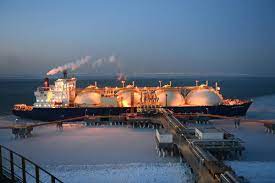The International Energy Agency is looking to set up mechanisms to stabilize natural gas prices and facilitate the sale of excess supplies to countries in need as the protracted war in Ukraine continues to squeeze the global market.
The LNG market is smaller than that for crude oil, with much of the fuel sold in essentially off-market transactions. LNG, crucial to Japan’s power needs, is also harder to stockpile, leading to greater price volatility.
The IEA will set up a body as early as this year to share and analyze information on purchasing and anticipated demand of natural gas across different countries, and to issue recommendations to the agency’s 31 member countries.
IEA members, which include the U.S., Japan and major European countries, were responsible for about 40% of global gas consumption in 2023, according to British industry group Energy Institute. Greater transparency on their supply and demand could improve predictability, curbing excessive volatility in LNG prices and reducing procurement costs.
The IEA will also consider building a framework for members with excess supply to share LNG during emergencies with countries facing shortages.
Many European countries are stockpiling natural gas using underground storage facilities at old gas fields. The framework could allow these facilities to sign supply deals to countries that rely entirely on imports, like Japan, where the government is encouraging the private sector to secure extra LNG supplies in case of a crisis.
Natural gas emits less carbon dioxide than coal, and is in high demand in countries pursuing decarbonization efforts like the U.S. and Japan. But current LNG prices are more than double the average for the past five years, even after falling significantly from a surge in 2022 triggered by Russia’s invasion of Ukraine.
The IEA’s January gas market report placed the price of Dutch TTF futures, the European benchmark, at 2.5 times the average between 2016 and 2020. Asian LNG spot prices were over double the average for the same period.
Natural gas accounted for over 30% of Japan’s electricity mix in fiscal 2022, and is expected to make up around 20% in fiscal 2030. Stabilizing and lowering LNG costs is a challenge for Japan amid the protracted war between Ukraine and Russia, which supplies it with nearly 10% of its LNG imports.

 Iran Energy News Oil, Gas, Petrochemical and Energy Field Specialized Channel
Iran Energy News Oil, Gas, Petrochemical and Energy Field Specialized Channel



